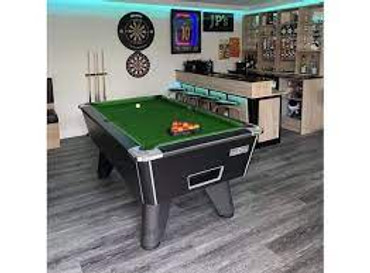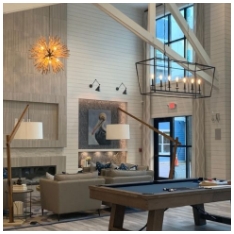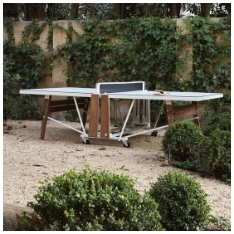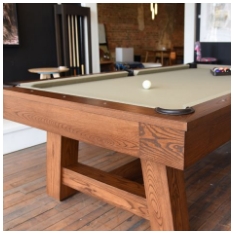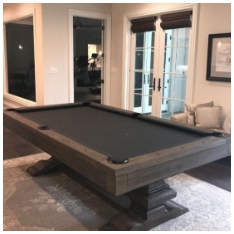Buying a pool table is not just about picking a design you like. The cost can vary significantly depending on materials, construction quality, brand, accessories, and even installation fees. If you’re considering adding one to your home or business, it’s important to understand where your money goes and how to choose a table that balances price with long-term value.
This guide explores the full breakdown of pool table pricing, from base costs to hidden expenses, so you can make an informed investment.
Understanding the Price Range
Pool tables range widely in cost, from around a few hundred dollars for basic recreational models to several thousand for professional-grade tables. On average:
- Entry-level tables: $500 – $1,200
- Mid-range tables: $1,500 – $3,000
- High-end tables: $3,500 – $10,000+
The gap in pricing comes down to construction materials, craftsmanship, and brand reputation. While budget tables can work for casual play, premium models are designed for longevity, precision, and tournament-level performance.
Material Quality and Construction
The type of materials used in a pool table is the largest factor affecting cost.
Slate vs. Non-Slate Beds
- Slate beds are the industry standard for accurate, consistent ball roll. Slate tables cost more, typically starting at $2,000. The slate is heavy, requiring professional installation, but it offers superior performance.
- Non-slate beds use materials such as MDF or plywood. These are lighter and more affordable, but they are prone to warping over time, especially in humid environments.
Frame and Cabinet Materials
- Solid hardwood frames, such as oak or maple, offer exceptional durability and can last decades with proper care.
- Engineered wood or particleboard frames reduce cost but sacrifice long-term stability.
Size and Space Requirements
The size of the pool table impacts both the purchase price and the space you need. Common sizes include:
- 7-foot tables – popular for home game rooms and casual players.
- 8-foot tables – the most common size for home use with a balance between playability and space.
- 9-foot tables – standard in professional tournaments; requires more space and a higher budget.
Larger tables require more material, more slate, and a more complex installation process, which increases costs.
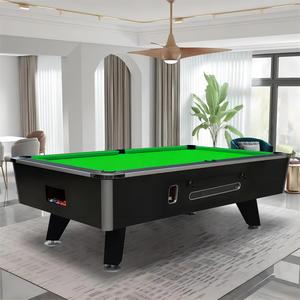
Brand and Manufacturing Origin
Brand reputation can influence pricing significantly. Established brands with decades of history often command higher prices due to proven craftsmanship and quality control.
American-made tables often use higher-quality hardwoods and thicker slate, while some imported models may focus on cost efficiency. However, not all imported tables are low quality — some offer excellent value when produced by reputable manufacturers.
Accessories and Add-Ons
The table itself is only part of the investment. Accessories can quickly add to the total cost.
Essential Accessories:
- Pool cues and racks
- Billiard balls
- Chalk
- Triangle rack or diamond rack
Optional Enhancements:
- Cue stands or wall racks
- Table covers to protect the surface
- Lighting fixtures designed for pool tables
- Specialty cue sticks for advanced shots
While basic accessory sets may be included with the purchase, higher-quality equipment will improve play experience and durability.
Installation and Delivery Costs
Professional installation is almost always required for slate pool tables due to their weight and precision leveling needs.
- Delivery fees depend on distance, table size, and difficulty of the installation space (stairs, tight corners, etc.).
- Installation charges for slate tables typically range from $300 to $600, but can be higher in complex setups.
Skimping on installation can result in poor table performance and unnecessary repairs.
Maintenance and Long-Term Costs
Owning a pool table means ongoing maintenance to keep it in good playing condition.
Cloth Replacement
The playing surface wears down over time. High-quality felt can last 5–10 years depending on usage, but replacement costs range from $250 to $600.
Cushion Replacement
Cushions lose their bounce over time. Replacing them can cost $300–$500.
Leveling and Adjustments
Seasonal changes in humidity can affect the table. Professional leveling may be needed periodically to maintain accuracy.
Commercial vs. Residential Use
Tables designed for commercial settings, such as bars or pool halls, are built for heavy, continuous use. They often include coin-operated mechanisms and reinforced frames, making them more expensive than residential models.
For home use, the focus is typically on aesthetics and comfort, with a variety of finishes to match interior décor.
The Impact of Design and Customization
Custom-built pool tables allow you to choose materials, finishes, and design details to suit your space. This can include:
- Unique wood stains or paint colors
- Intricate leg designs
- Inlays or custom logos on the cloth
While customization adds personality, it also increases the total cost significantly, often pushing prices into the premium range.
Buying New vs. Used
A used pool table can save money, but there are risks:
- Slate condition and structural integrity can be difficult to verify.
- Moving and reinstalling a used table still requires professional help.
- Replacement parts for discontinued models may be hard to find.
If buying used, inspect the table in person and budget for potential repairs or re-felting.
Budgeting for a Pool Table Purchase
To understand the true cost of a pool table, it’s important to factor in:
- Base table price
- Delivery and installation
- Accessories and upgrades
- Maintenance and repairs over time
A realistic budget for a high-quality table with all necessary extras is often 20–30% higher than the table’s sticker price.
Tips for Making a Smart Purchase
- Measure your space before choosing a table size, accounting for cue clearance on all sides.
- Test the table in person when possible to evaluate build quality and playability.
- Compare brands and reviews for long-term performance data.
- Factor in total ownership cost, not just the purchase price.
- Choose a reputable dealer who offers delivery, installation, and after-sales support.
Conclusion
The cost of a pool table goes far beyond the initial purchase price. Materials, size, brand, accessories, installation, and maintenance all play a role in determining the final investment. Understanding each factor helps you make a purchase that matches your budget and playing needs while ensuring long-term enjoyment.
By unlocking the true cost of pool tables, you can approach the buying process with confidence, knowing you’re investing in a table that offers the right balance of quality, performance, and value.
